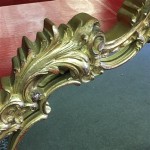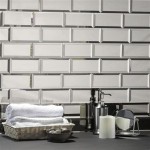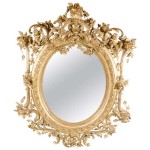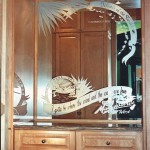Moroccan Style Mirrors: A Reflection of Art and Culture
Moroccan style mirrors are more than decorative items; they represent a rich cultural heritage, a blend of artistic influences, and a dedication to craftsmanship. These mirrors, often characterized by intricate details and unique materials, bring a distinctive aesthetic to any interior space. The allure of Moroccan mirrors lies in their ability to transform a room, creating an atmosphere of exotic elegance and timeless charm.
Understanding the design elements and cultural significance of these mirrors requires an appreciation for the history and artistry that shapes their creation. The use of specific materials, the application of traditional techniques, and the incorporation of symbolic motifs contribute to the overall character of Moroccan mirrors. This article aims to explore the various facets of Moroccan style mirrors, from their historical roots to their contemporary applications.
Historical Influences and Design Evolution
The design of Moroccan mirrors is deeply rooted in the country's history and its interaction with various cultures. Over centuries, Morocco has been influenced by Berber, Arab, Andalusian, and European traditions, each leaving its mark on the nation's artistic expressions. The intricate geometric patterns, the use of vibrant colors (though mirrors often rely on natural tones), and the application of detailed metalwork all reflect these diverse influences.
Early Moroccan mirrors were often functional objects, serving primarily as reflective surfaces within homes. As trade routes expanded and access to diverse materials increased, mirrors evolved into decorative pieces, showcasing the skill of local artisans. The introduction of glassmaking techniques from Europe further transformed the mirror's design, enabling larger and more elaborate creations.
The incorporation of Islamic art principles is particularly evident in Moroccan mirror design. The avoidance of representational figures, as per Islamic tradition, led to a focus on geometric patterns and calligraphic embellishments. These elements are meticulously incorporated into the frames and surrounding designs, creating visually captivating and symbolically rich pieces.
The use of specific materials often reflects the availability of resources in different regions of Morocco. Wood, metal, and glass are commonly utilized, with variations in style and craftsmanship depending on the specific location. For instance, mirrors from Marrakech often showcase intricate wood carvings, while those from Fez may feature elaborate metalwork. The interplay of these materials enhances the visual appeal and cultural significance of each mirror.
Key Characteristics and Design Elements
Several key characteristics distinguish Moroccan style mirrors from other decorative mirrors. These include the use of specific materials, the application of intricate designs, and the incorporation of traditional motifs. Understanding these elements is crucial for appreciating the artistry and cultural significance of these mirrors.
Materials:
Moroccan mirrors often feature a combination of natural materials, including wood, metal (specifically brass, copper, and silver), and glass. Wood is frequently used for the frames, providing a sturdy base for the intricate designs. Metal is often employed for decorative embellishments, adding a touch of opulence and visual interest. Glass, of course, serves as the reflective surface, often sourced locally or imported depending on the desired quality and size.Geometric Patterns:
A defining feature of Moroccan mirrors is the use of intricate geometric patterns. These patterns, often inspired by Islamic art principles, create a sense of visual harmony and complexity. Common geometric motifs include stars, polygons, and tessellations, each meticulously crafted and arranged to form captivating designs. The precision and symmetry of these patterns reflect the mathematical and philosophical underpinnings of Islamic art.Metalwork:
The application of metalwork is another hallmark of Moroccan mirror design. Brass, copper, and silver are frequently used to create intricate embellishments, adding a touch of elegance and sophistication. Metalwork techniques include repoussé (hammering metal from the reverse side to create a raised design), chasing (engraving designs on the metal surface), and filigree (creating delicate patterns using fine metal threads). These techniques require a high level of skill and craftsmanship, resulting in visually stunning and durable pieces.Arches and Curves:
Many Moroccan mirrors incorporate arched or curved shapes, reminiscent of traditional Moroccan architecture. These shapes add a sense of softness and fluidity to the overall design, contrasting with the sharp angles of the geometric patterns. The arches and curves also serve to frame the reflective surface, drawing attention to the mirror itself.Calligraphic Embellishments:
In some Moroccan mirrors, calligraphic embellishments are incorporated into the design. These embellishments often feature verses from the Quran or other significant texts, adding a layer of spiritual meaning to the piece. The calligraphy is typically executed in a traditional Arabic script, showcasing the beauty and artistry of Islamic calligraphy. The inclusion of calligraphy transforms the mirror into a piece of art that reflects both aesthetic and spiritual values.Contemporary Applications and Interior Design
Moroccan style mirrors are highly versatile decorative elements that can be incorporated into a variety of interior design styles. Their unique aesthetic allows them to seamlessly blend with both traditional and modern settings, adding a touch of exotic elegance and cultural richness. The key to successfully integrating Moroccan mirrors into interior design lies in understanding their scale, color, and overall design aesthetic.
Entryways and Hallways:
Moroccan mirrors are particularly effective in entryways and hallways, creating a welcoming and visually appealing space. A large, ornate mirror can serve as a focal point, reflecting light and creating a sense of spaciousness. Smaller mirrors can be strategically placed to enhance the flow of light and create visual interest along hallways.Living Rooms:
In living rooms, Moroccan mirrors can be used to add a touch of exotic elegance to the décor. A large mirror placed above a fireplace or console table can serve as a statement piece, reflecting light and creating a sense of depth. Smaller mirrors can be incorporated into gallery walls or used as decorative accents on shelves and tables.Bedrooms:
Moroccan mirrors can also be used to create a serene and inviting atmosphere in bedrooms. A large mirror placed opposite a window can reflect natural light, making the room feel brighter and more spacious. Smaller mirrors can be used as decorative accents on bedside tables or dressers, adding a touch of exotic flair. The use of soft lighting and natural materials can further enhance the calming effect of the mirrors.Bathrooms:
Bathrooms are another ideal space for incorporating Moroccan mirrors. Their intricate designs and ornate details can add a touch of luxury and sophistication to the space. A large mirror above a vanity can serve as a focal point, while smaller mirrors can be used as decorative accents on walls or shelves. The use of warm lighting and natural textures can further enhance the spa-like atmosphere of the bathroom.Styling Tips:
When incorporating Moroccan mirrors into interior design, it's important to consider the overall aesthetic of the space. For traditional settings, mirrors with ornate frames and intricate designs are a good choice. For modern settings, mirrors with simpler frames and clean lines may be more appropriate. The color and texture of the mirror should also complement the existing décor. For example, a mirror with a brass frame can add a touch of warmth and elegance to a neutral-toned room, while a mirror with a silver frame can add a touch of sophistication to a modern space. The size of the mirror should also be proportional to the space, ensuring that it does not overwhelm or get lost in the room.Beyond their aesthetic appeal, Moroccan mirrors offer a tangible connection to a vibrant culture and rich artistic heritage. Their durability, artistry, and timeless design make them a valuable addition to any interior space, capable of elevating the ambiance and reflecting a refined sense of style.

Moroccan Curved Wall Mirror Dunelm

Moroccan Mirror Wall Mirrors Decor Large Arch

Moroccan Rectangular Metal And Camel Bone Mirror 109lm24 Living Morocco

Moroccan Style Mirror Bibi S Boutique

Teardrop Mirror With Candleholders Moroccan Style Gilt Chiswick Decorexi A World Of Interiors

Moroccan Mirror With Decorative Frame For At Pamono

Moroccan Style Gold Mirror Modest Hut

Pierced Lattice Mirror Moroccan Style Wall Metal Broe Decorexi A World Of Interiors

Mark Montano Moroccan Inspired Mirrors

Arabic Wall Art Hand Carved Mirror Moroccan Decor Decorative Silver







